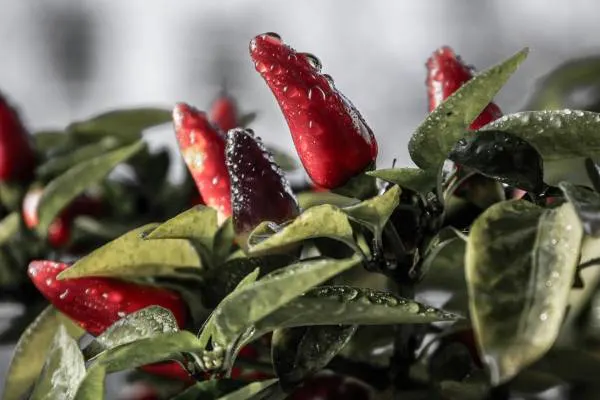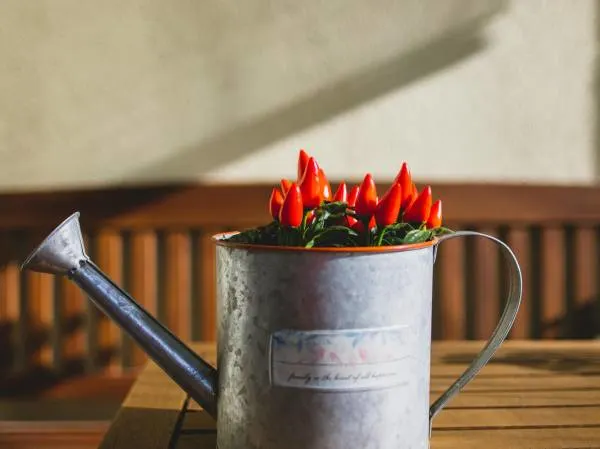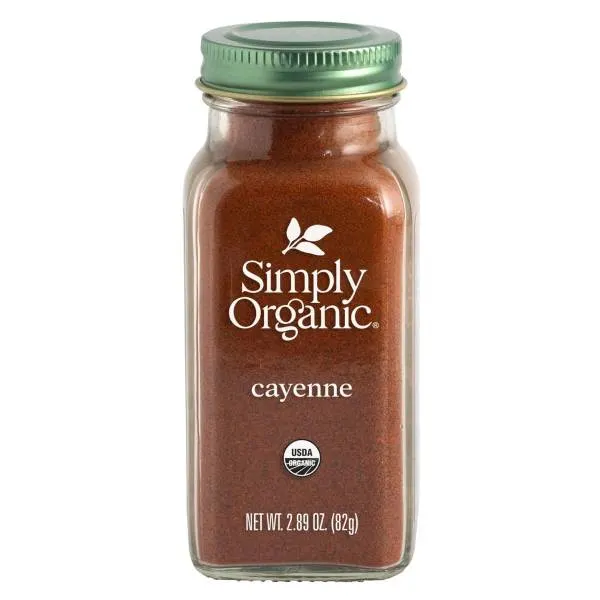Most people rely on simple, regular remedies to solve home issues. These remedies may not always work, but they’re affordable and worth a try.
One popular home remedy involves using cayenne pepper to repel garden pests.
Cayenne’s spiciness makes it effective against various adversaries, and this simple solution can help protect your hard work without you breaking the bank!
You can use it in liquid, powdered, or crushed form to create a repellent; all forms are equally effective.
In this article, we will see if cayenne pepper hurts plants or not.
So, what are you waiting for?
Let’s begin!
- Will Cayenne Pepper Hurt Plants?
- How Do You Make and Use Cayenne Pepper for Plants?
- Fresh Hot Cayenne Pepper Spray Recipe:
- Cayenne Pepper Hot Saucy Spray Recipe:
- Cayenne Pepper Tea Recipe:
- Create a Cayenne Pepper Barrier
- Burn Cayenne Pepper to Create Smoke
- What’s the Best Way to Use Cayenne Pepper?
- Conclusion

Will Cayenne Pepper Hurt Plants?
No! Cayenne pepper will not hurt your plants because they are naturally immune to it.
In fact, it acts as a natural insecticide and a pesticide that repels different sorts of pests from eating up edible parts of your plant.
Hot pepper spray (preparation method will be mentioned next) is a reliable and natural option to keep pests away from your plants. You need a few ingredients, and you can prepare a safe spray for the environment and beneficial for your garden’s beauty.
Utilizing a cayenne pepper spray can effectively discourage animals and pests that may disturb your plants at night. Furry creatures, such as squirrels, rabbits, and deer, tend to avoid your plants due to the pungent and spicy nature of cayenne peppers.
This makes them less inclined to feast on your plants after sampling the fiery flavor.
Additionally, cayenne pepper has been identified as toxic to certain insects like spider mites and lace bugs, causing damage to their nervous systems.

How Do You Make and Use Cayenne Pepper for Plants?
To prepare a repellent for your plant, you can use cayenne pepper in many ways.
Making cayenne pepper spray is the most straightforward and most used recipe. Still, it is not the only one.
There are also many other options to opt for; let’s discuss each of them in detail!
Note: Before using any mixture directly on your plants, test it first. Please put it on a few leaves and let it stay for a few hours. If you don’t get any adverse effects, you can continue using the spray on your plants.
Fresh Hot Cayenne Pepper Spray Recipe:
You have a few options to make a simple cayenne pepper spray for your plants.
- Chop up two tablespoons of fresh cayenne pepper or use three to five tablespoons of pepper flakes.
- Mix it with a gallon of water in a pot and heat it until it boils.
- Let it simmer for 15 minutes, then cool for 24 hours.
- After that, strain out the pepper pieces and flakes and add two teaspoons of vegetable oil to help the spray stick to your plants without harming them.
- Pour the mixture into a spray bottle, and you’re ready to go!
This homemade pepper spray works for about 2–3 months before losing its strength. It’s an easy and natural way to protect your plants from pests.
Pro Tip: When you notice that the mixture starts boiling, don’t forget to stay away from the heat of the vapors, as it can irritate your throat and eyes.

Cayenne Pepper Hot Saucy Spray Recipe:
Opt for hot Cayenne Pepper sauce that is readily available in the market.
To prepare the solution:
- Combine 8 ounces of cayenne-based hot pepper sauce with a gallon of water.
- Add six drops of liquid soap to the mixture.
- The hot sauce, being in liquid form, easily dissolves and diffuses better than flakes or powder.
- Blend the ingredients thoroughly and transfer the solution to a spray bottle.
This homemade plant spray, stored in the fridge, has a longer shelf life than the basic recipe. However, it’s recommended to use the spray soon after preparation for optimal results.
Cayenne Pepper Tea Recipe:
While this recipe is a little more time-consuming, it yields excellent results.
- Begin by finely chopping ten cayenne peppers and optionally adding ten cloves of garlic.
- Simmer the mixture for 10 to 15 minutes, then add 1 gallon of water.
- Bring it back to a simmer and continue for another 30 to 45 minutes.
- Afterward, remove the pot and cover it, letting the contents steep for 24 hours.
- Strain the mixture into a spray bottle and incorporate 4 to 5 drops of liquid soap.
The resulting solution can be refrigerated for up to 3 months. However, it is recommended to use within a few weeks for optimal freshness.
Create a Cayenne Pepper Barrier
To keep insects away from climbing up to your plants, consider using a barrier of cayenne pepper.
Sprinkle the cayenne pepper powder along the borders of your garden, around individual plants, or on the surface of flowerpots.
The presence of cayenne pepper acts as a deterrent since it is toxic or abrasive to certain insects, keeping them at bay.

Burn Cayenne Pepper to Create Smoke
When cayenne pepper is burned, it acts as an irritant.
Utilize this characteristic of cayenne pepper to eliminate pests from your garden.
Burn one ounce of powdered pepper near the plants with pest issues. This action will either exterminate the pests or force them to leave the plants.
Use caution to prevent children and pets from coming into contact with the cayenne pepper in the garden during this process, as it can cause irritation to them as well.
What’s the Best Way to Use Cayenne Pepper?
Choosing cayenne pepper to protect your plants from pests is a natural approach and a budget-friendly and organic solution. To go with this option, initially, it is crucial to choose between sprinkling cayenne pepper powder directly and using a cayenne pepper spray for convenient application.
- While cayenne Pepper powder may wash away in the rain, the spray, especially when mixed with oil, is less susceptible to weather conditions such as rain and wind.
- If squirrels or raccoons are more common, consider dusting more frequently, particularly on lower leaves and stems, to ensure effective pest deterrent action.
- For the powder, use the small holes in the container to lightly dust it on lower leaves and stems, covering the ground around your plants. As for the spray, apply it in the evening, covering leaves, stems, and veggies.
- Apply either the powder or the spray every 3 to 4 days, especially after rain. Apply in the morning after watering for optimal results, avoiding the hot afternoon sun.
- Wear gloves and protect your eyes during application, whether you are using cayenne pepper powder or spray.
That’s all for today.
Now, it’s time to move toward the conclusion.
Conclusion
Using cayenne pepper to protect your plants is a brilliant and budget-friendly idea.
Cayenne’s spiciness acts as a natural bodyguard for your garden, keeping away pesky pests without hurting your plants. It contains capsaicin, a spicy element that irritates animals like rabbits and deer, keeping them away from your plants.
Making a cayenne pepper spray is relatively easy.
Other methods are also available, like using cayenne pepper sauce or creating a cayenne pepper tea.
Remember to be cautious, wear gloves, and protect your eyes when applying it.
And after harvesting, give your veggies a good wash to remove any lingering spiciness.
Top of Form
Regards,
Moiz Atiq.
